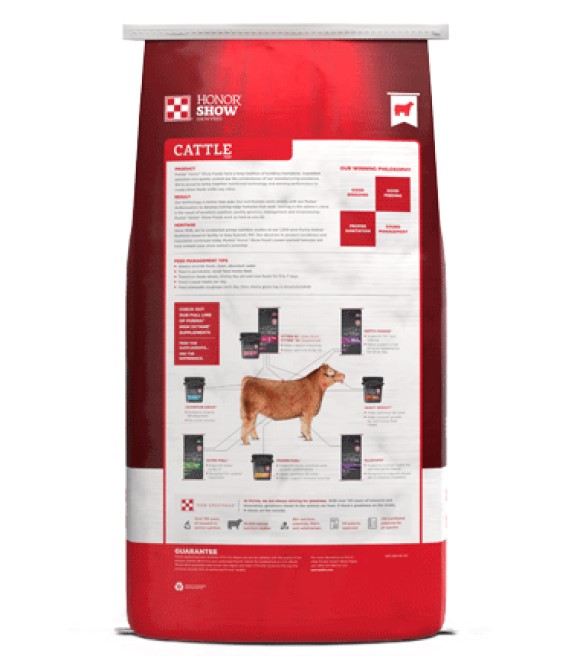Purina, Honor Under Control 11 TXT, 50 lb
- No Corn, No Beet pulp
- Reduced starch and sugar content designed to reduce energy density and maintain structural integrity
- High fiber, moderate energy feed
- Maintains shape and bloom during periods of reduced weight gain and body condition management
- Helps provide correct nutrition for finish and appearance
- Zinpro® Availa® 4 Minerals
- Peleton® Yeast Feed Additive
$34.99
Your pick up store is Sonora
33 in stock
Quantity Discounts Available, See Below.
Max NaN per customer
Designed for when you have one at “12 o’clock” and don’t want to get to 12:30, Under Control® is formulated with NO corn, NO beet pulp, and is high in fiber and roughage making it perfect for heifers and steers that need to be “cooled down”. The protein to energy ratio has been widened and added bypass protein sources incorporated to maintain muscle shape and help avoid a dull, deflated look during a period of reduced energy intake.
Guaranteed Analysis:
Nutrient Level
Crude Protein, min ……………………………………………….11.00%
Crude Fat, min ………………………………………………………2.00%
Crude Fiber, max ………………………………………………….20.00%
Calcium (Ca), min …………………………………………………..0.55%
Calcium (Ca), max ………………………………………………….1.05%
Phosphorus (P), min ……………………………………………….0.30%
Salt (NaCl), min ………………………………………………………0.15%
Salt (NaCl), max …………………………………………………….0.65%
Sodium (Na), max …………………………………………………..0.51%
Potassium (K), min …………………………………………………0.65%
Selenium (Se), min …………………………………………….0.44 ppm
Selenium (Se), max ……………………………………………0.53 ppm
Vitamin A, min ……………………………………………… 3,520 IU/LB
Directions:
Honor® Show Under Control™ 11 feed is designed to be fed at 1-2% of body weight per head per day along with free-choice hay or forage to cattle for managing weight gain and/or body condition. If cattle have not been receiving a moderate energy diet, Honor® Show Under Control™ 11 feed should start being offered at 1% of body weight per head per day and increased gradually to the desired fed rate along with free-choice hay or forage. Always allow free access to plenty of clean, fresh water at all times.
Follow these management practices:
1. Monitor body condition of cattle on a regular basis. 2. Recommended feeding rates should be adjusted depending on cattle body condition. 3. When making a ration change, allow 7 to 10 days for animals to adjust to the new ration. 4. Provide adequate feeder space for each animal. 5. Provide mineral and salt free choice. 6. Provide fresh, clean water near the feeding area. In groups of cattle, there are certain animals that experience chronic bloat or other digestive disturbances and consequently, are poor performers. In addition, excess feed consumption, severe weather changes resulting in erratic feed consumption and poorly managed feeding practices can increase the incidence of bloat in all cattle. If bloat occurs, please review feed management practices.
Caution: Store in a dry, well-ventilated area protected from rodents and insects. Do not feed moldy or insect-infested feed to animals.
| Weight | 50 lbs |
|---|
Purchase this item in these amounts to apply quantity discounts.
Quantity Discounts may not apply if a better discount is available. The best discount available will be reflected at Checkout.
PRODUCT REVIEWS
RELATED PRODUCTS
Showrite, Newco Grower Lamb Feed, 50 lb
$32.99
Out of stock in Sonora Check nearby stores
This item is not available for purchase online.





